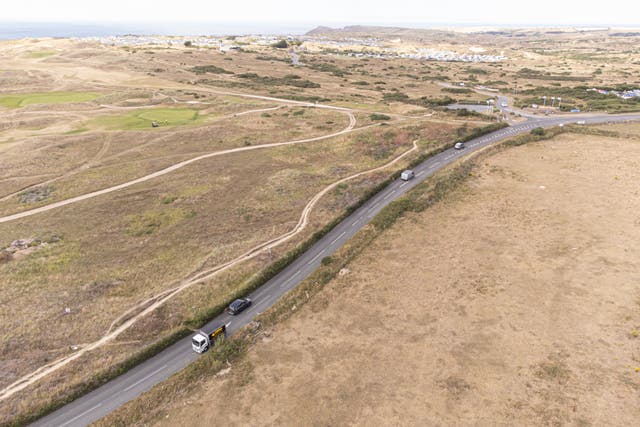
The record-breaking conditions seen in 2023 could be a “cool year” in the UK by the end of the century, scientists have said.
The latest annual report on the state of the UK’s climate – led by the Met Office – looks at temperatures, rainfall and storms, as well as seasonal changes such as trees coming into leaf.
It highlighted extreme weather events that hit Britain in 2023, including the warmest June ever, the lengthy September heatwave and Storm Babet, which caused widespread disruption, flooding and several deaths when it hit in October.
In this year’s report, the researchers gave more focus to how individual high-impact weather events are increasing in frequency and intensity.
The new analysis showed the UK is seeing, on average, more frequent periods of hot weather and an increase in extreme rainfall, bringing challenges for infrastructure, health and wellbeing.
For example, only London and Hampshire recorded an average of six or more days a year above 28°C during the 1961-1990 period.
But in the latest decade of 2014-2023, much of England and Wales hit this temperature threshold, with frequencies increasing to more than 12 days in several southeast counties.
Meanwhile, the number of “very hot” days that surpass 30°C have more than trebled in the UK during the 10-year period, compared with 1961-1990.
The UK is also getting wetter, the research suggests, with the 2014-2023 period seeing around 20% more days of exceptional rainfall.
Last year was the seventh wettest on record but also saw the wettest second half of a year ever.
Meanwhile, the storm season had its most active start with respect to the number of named storms since storm naming was introduced in 2015, with seven named storms, Agnes to Gerrit, from September to December.
Mike Kendon, lead author and Met Office climate scientist, said: “Our new analysis of these observations really shines a light on the fastest-changing aspects of our weather as a consequence of climate change.
“Long-term averages can be difficult for people to relate to, but what we are showing here is the notable change in frequencies of extreme weather that can have a real impact on people’s lives.”
Mr Kendon noted that there has been a “complete collapse” in record-breaking cold months.

On the other hand, 2014-2023 was found to be the UK’s warmest decade on record and included six of the top 10 warmest years, and was 1.25C warmer than the 1961-1990 average.
Under the 2015 Paris Climate Agreement, nations pledged to pursue efforts to limit warming to 1.5C above pre-industrial levels.
The UK’s mean temperature last year was 1.66C above the 1961-1990 averaging period, with the researchers estimating that another year like 2023 is now 150 times more likely under the current climate.
Mr Kendon said 2023 “will be a fairly average year by the middle of the century and actually a fairly cool year by the end of the century”.
He said the UK is now looking at hitting two degrees of warming by 2100, compared with the 1991-2020 average.
“So that’s really a dramatic indication that our climate is going to be pushed outside the envelope of the current and historical range,” he added.
Its section on sea level rise, authored by the National Oceanographic Centre (NOC), data from the tide gauge at Newlyn, Cornwall, showed that 2023 was the highest year on record for annual mean sea level since records began in 1915.
Other sites around the UK also had their highest or second-highest year on record in 2023, the paper said.
Dr Svetlana Jevrejeva, sea level scientist at NOC, said the results are “due to increased rate of ice loss from the Greenland and Antarctic ice sheets, as well as continued glacier mass loss and warming of the ocean”.
Researchers from the Woodland Trust also shared findings for the report from their study of season changes in plants and animals from year to year.
They found that 2023 was a near average or late year for most events, with the exception of hazel flowering 12 days ahead of the baseline, and elder first leafing.
Dr Judith Garforth, citizen science officer at the Woodland Trust, said: “This illustrates how the effect of weather on UK wildlife is complex – the impact is unique for each species and seasonal event, and of course weather can be very localised too.”


Comments: Our rules
We want our comments to be a lively and valuable part of our community - a place where readers can debate and engage with the most important local issues. The ability to comment on our stories is a privilege, not a right, however, and that privilege may be withdrawn if it is abused or misused.
Please report any comments that break our rules.
Read the rules hereLast Updated:
Report this comment Cancel